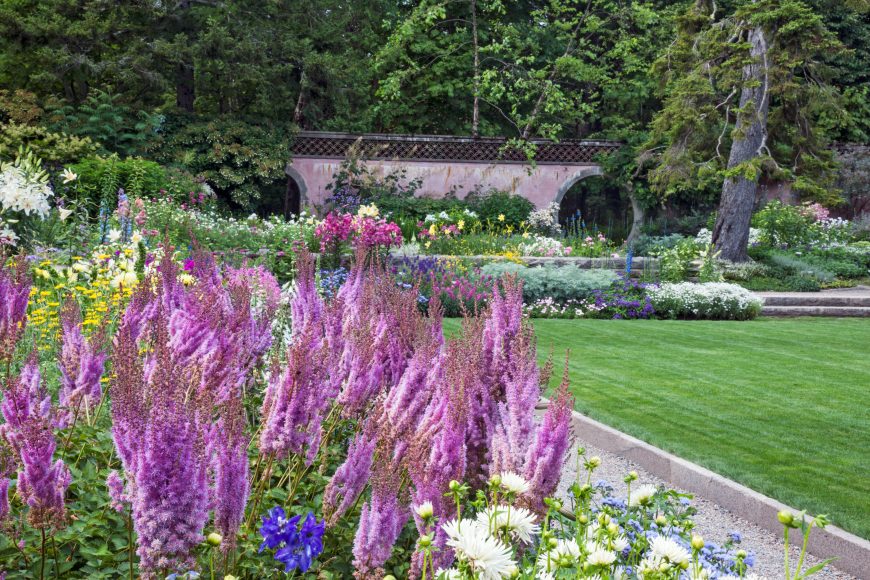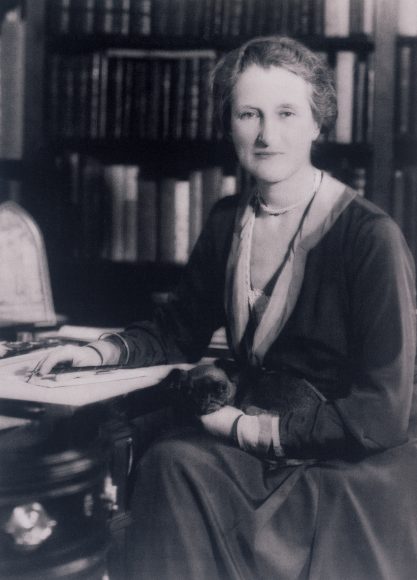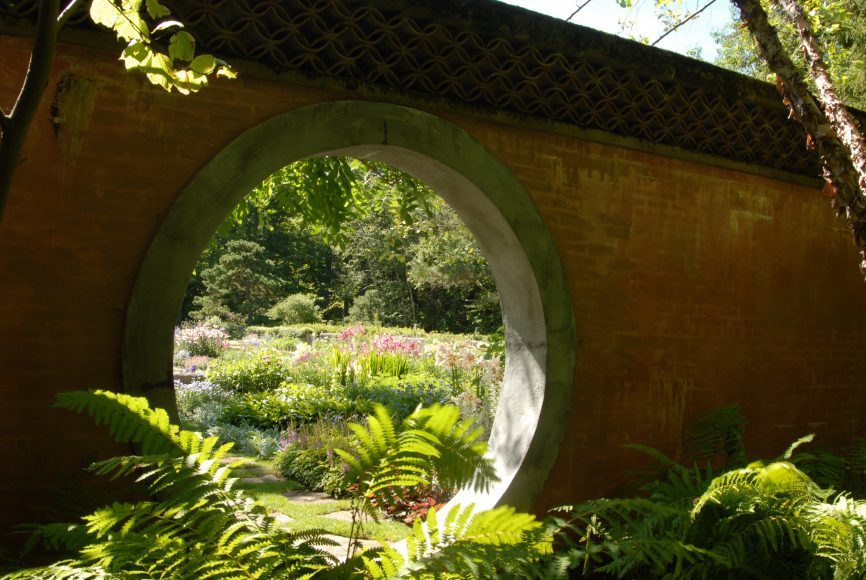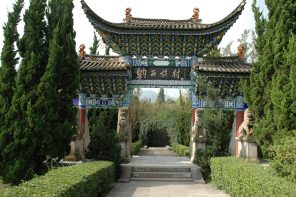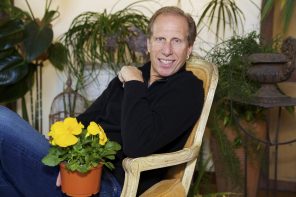When it comes to landscaping, there have been biblical gardeners (Adam, and according to filmmaker Darren Aronofsky, Noah), sexy gardeners (John Rowland on “Desperate Housewives”) and historical gardeners (Frederick Law Olmsted, Lancelot “Capability” Brown, André Le Nôtre). We tend to think of them – to the extent that the general public thinks of them at all – as having been men, with Gertrude Jekyll as the exception that proves the rule.
Yet at the dawn of the 20th century, as the United States was coming into its own, so, too, were its gardens and its daughters. Both looked to other cultures but with an eye to becoming modern and uniquely American. And they found that purpose in one another.
“The garden (as profession) seemed like a natural, proper extension of what women did, because they found means of expression in their own gardens,” says garden designer Patrick Chassé, an expert on Beatrix Farrand, one of the subjects of “Groundbreakers: Great American Gardens & The Women Who Designed Them” at The New York Botanical Garden May 17-Sept. 7.
Besides Farrand (1872-1959), the exhibit considers the work of Marian Coffin (1876-1957), Ellen Shipman (1869-1950) and their colleagues, who brought form, color and life to Winterthur in Winterthur, Del., Dumbarton Oaks in Washington, D.C., The Abby Aldrich Rockefeller Garden in Seal Harbor, Maine, and the Peggy Rockefeller Garden among others at The New York Botanical Garden in the Bronx.
It’s the kind of multidisciplinary approach that worked so well in The Garden’s presentations on the Alhambra, Emily Dickinson and Claude Monet, says Todd Forrest, The Garden’s Arthur Ross vice president for horticulture and living collections, part of “Groundbreakers” seven-member creative team. What the team has come up with is a feast for many of the senses, including an exhibit on the women who photographed the great gardens – Jessie Tarbox Beals, Mattie Edwards Hewitt and Frances Benjamin Johnston; a poetry walk featuring the works of the nature-loving Edna St. Vincent Millay, a groundbreaker in her exploration of female sexuality; public programs that spotlight jazz and the martial music of John Philip Sousa, the soundtrack of that time; a mobile app for navigating the show; and a catalog.
But the centerpiece will no doubt be the evocation of The Abby Aldrich Rockefeller Garden, which Farrand created in 1926 for The Eyrie, the summer home of Abby and her husband, philanthropist John D. Rockefeller Jr.
Considered one of the finest examples of its kind, the garden earned its reputation for its sophisticated East-West interplay, along with the way it juxtaposes traditional summer offerings with a mossy woodland and an Asian-influenced Moon Gate and tile-capped enclosing wall – all in a coastal Maine clearing. The New York Botanical Garden pays tribute to this in “Mrs. Rockefeller’s Garden” at the Enid A. Haupt Conservatory. There visitors will pass through a tile-capped wall onto a path bordered by a blend of delphiniums, dahlias, astilbes, foxgloves, hydrangeas and others.
The woman who ultimately inspired this was like someone out of an Edith Wharton novel. But then, Farrand was Wharton’s niece. Her father, Freddy, and Wharton were Joneses – as in keeping up with the. Money, however, doesn’t buy breeding, as Wharton’s novels attest. Freddy was a cad who ultimately divorced Farrand’s mother, Minnie, and married his mistress, in effect disinheriting mother and daughter. Still, they had a champion in Wharton and anyway, Farrand was not interested in remaining a debutante.
“I made up my mind,” she said, “to go in regularly for landscape gardening.”
Easier said than done, however. At a brown bag roundtable over the winter, Patrick Chassé and Todd Forrest talked about the limitations in Farrand’s day for women seeking to be landscape architects, which were largely educational. A landscape architect must know surveying and engineering. Few if any such schools would accept females (though Marian Coffin would graduate from MIT in 1904 with a degree in landscape architecture).
Farrand, four years older, studied horticulture with Charles Sprague Sargent, director of the Arnold Arboretum in Boston and a cousin of the painter John Singer Sargent, then set up shop in the attic of her mother’s house. Thanks in part to her social connections, she earned many notable commissions, ultimately completing more than 110 gardens, including Dumbarton Oaks and projects at the White House during the Woodrow Wilson administration and at what is now The Morgan Library & Museum in Manhattan. She consulted at Princeton and Yale universities. Her Connecticut work, which appears to have begun with the garden for Greenwich real estate developer Nathaniel Witherell, included the gardens at Eolia, the summer home of the Harkness family of Standard Oil fame (now Harkness Memorial State Park in Waterford); Hill-Stead, the Farmington home of architect Theodate Pope Riddle; and Three Rivers Farm, now Promisek, a Roman Catholic lay community near Bridgewater.
But Farrand’s greatest work may have been The Abby Aldrich Rockefeller Garden, inspired by Abby and John D. Jr.’s 1921 trip to China for the dedication of Peking Union Medical College, built by the Rockefeller Foundation – the centerpiece of their Far East tour.
This was not to be the only Farrand-Rockefeller collaboration, so to speak. In 1915, Nathaniel Lord Britton, founding director of The New York Botanical Garden, asked Farrand to design a large rose garden on 1.25 of The Garden’s 250 acres in a valley flanked by a ridge and a gorge near the evocative stone cottage that had been part of the Lorillard estate. Farrand came up with a plan that conjured the rose garden of the Château L’Hay and the lost garden of Malmaison, once the refuge of the Empress Josephine. From an iron gazebo radiated three walks and 10 smaller paths along which visitors could stop and smell more than 100 varieties of shrub roses and more than 200 horticultural varieties.
In 1947, Marian Coffin proposed streamlining the garden. It would be dismantled in 1969 after it fell into disrepair and was deemed too remote from The Botanical Garden’s center. Then in 1985, a Farrand exhibit spurred Beth Straus, a member of The Botanical Garden’s horticultural committee, to resurrect the rose garden. To that end, she turned for funding to David Rockefeller, the youngest of Abby and John D. Jr.’s six children. The garden was named in honor of David’s wife, Peggy, who had become the keeper of her mother-in-law’s garden in Maine.
All these ladies are gone. The care of The Abby Aldrich Rockefeller Garden – open to the public on select days – is in the hands of Neva Goodwin, Peggy and David’s daughter. And the Peggy Rockefeller Rose Garden remains one of the joys of a Botanical Garden visit.
“Don’t plant a rose garden unless you mean to look after it, because it is only in storybooks that a neglected rose garden is attractive,” Farrand once said.
Yes, but sometimes a garden, like life, can have a storybook ending.
For more on “Groundbreakers: Great American Gardens & the Women Who Designed Them” at The New York Botanical Garden May 17-Sept. 7, visit nybg.org. For reservations to visit The Abby Aldrich Rockefeller Garden, visit rockgardenmaine.wordpress.com/. And for more on Beatrix Farrand, check out “Beatrix Farrand: Private Gardens, Public Landscapes” (The Monacelli Press, 2009) by Judith B. Tankard, who’ll be speaking at The Botanical Garden June 4 from 10 a.m. to noon.

